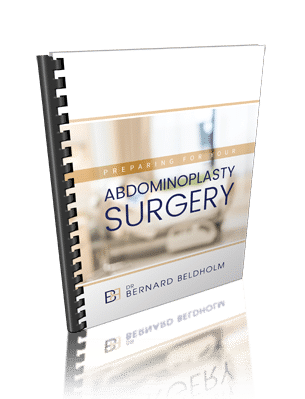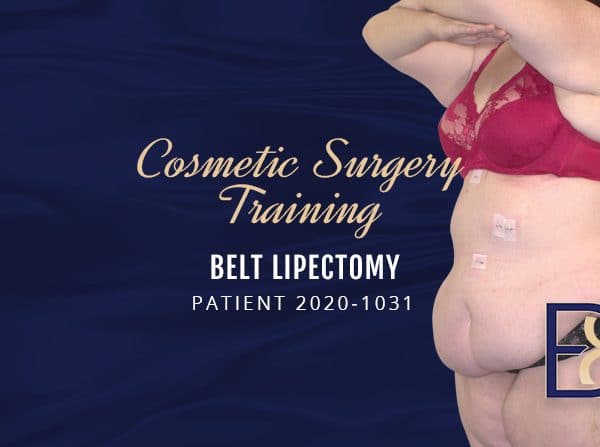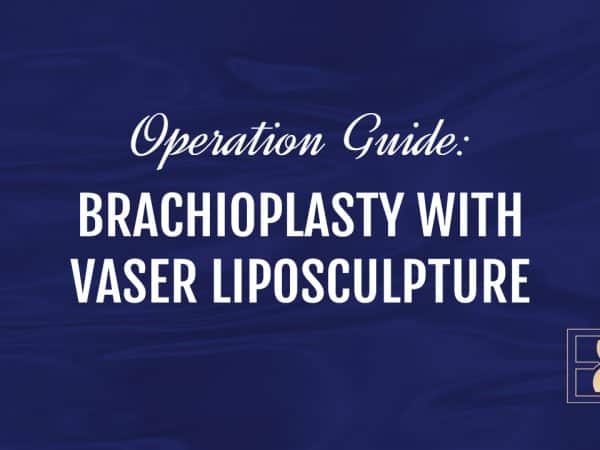VASER Abdominoplasty Surgery Guide
Excess abdominal skin and fat are a cosmetic nuisance. Many patients seek help from a tummy tuck surgeon to get a firmer, tighter abdomen after weight loss or pregnancy. While a standard tummy tuck tightens loose skin, adding liposuction to the procedure can result in a slimmer and better-defined waistline.
What is a VASER liposuction abdominoplasty?
The VASER tummy tuck combines skin removal and fat melting with liposuction. The procedure targets loose skin and fat. A standard tummy tuck only fixes loose skin; Fat is minimally **. The VASER tummy tuck goes a step further to not only tighten abdominal skin, but also create slimmer contours.
Liposuction pairs well with a tummy tuck since many patients with lax skin also have excess fat in the abdominal region. There are many types of liposuction that can be performed during a tummy tuck. VASER liposuction is just one of them.
VASER melts fat into liquid with ultrasound energy. Once melted, the fat can be easily removed with low-power suction. Traditional liposuction involves breaking the fat apart (often manually), and then removing the solid fat with high-power suction. VASER is considered a **and highly effective method of fat reduction. Many surgeons claim it provides superior fat reduction than older forms of liposuction. VASER can also be performed as a standalone procedure to remove fat bulges, absent of ** skin.
How does it Differ from Traditional Abdominoplasty?
A standard tummy tuck has two main benefits: It removes excess skin and repairs abdominal muscle separation. Any fat that is attached to the skin is removed as well.
Traditional Abdominoplasty:
- Removes abdominal skin along with the underlying fat
- Repairs abdominal muscle separation
An Abdominoplasty with VASER does four things. Like a tummy tuck, it removes excess skin and repairs separated abdominal muscles. It also melts and removes fat for slimmer abdominal contours using VASER technology. Yet VASER can do more than remove fat.
VASER Abdominoplasty:
- Removes abdominal skin along with the underlying fat
- Eliminates fat bulges elsewhere on the abdomen
- Repairs abdominal muscle separation
- Highlights the existing abdominal curves and musculature
What are the Benefits of a VASER Tummy Tuck?
Many patients with ** skin also have unwanted fat. VASER liposuction makes it possible to ** remove fat during a tummy tuck.
According to Solta Medical, it delivers results with less pain, swelling, and downtime. VASER technology is also reported to tighten skin. However, it cannot tighten skin as much as a tummy tuck. For this reason, VASER is often combined with a tummy tuck to reduce fat and correct significant skin **.
As a combined procedure, there is only one recovery period. The cost is also typically less than a tummy tuck and liposuction performed separately.
Finally, VASER may make it ** to perform liposuction during a tummy tuck. The VASER probe creates small holes in the abdominal tissues as it melts fat. As a result, the surgeon can remove the loose skin with fewer cuts. Minimal dissection is the key to ** surgery. Along with modern surgical techniques, the VASER tummy tuck is likely to have a lower risk of complications (such as numbness) than older tummy tuck methods.
Who is a Good Candidate for the VASER Tummy Tuck?
Generally speaking, the procedure is designed for patients who have:
- ** skin and modest fat on the abdomen after pregnancy or weight loss
- Good skin elasticity
- Abdominal muscle separation
Patients must also meet certain criteria to qualify for elective surgery. The ideal candidate:
- Has reached (or is close to) their goal weight
- Maintains a stable weight for at least six months
- Is mentally and physically fit
- Accepts that the surgery will leave a scar on the abdomen
- Can take up to four weeks off work and driving to recover
- Does not smoke, or is willing to quit at least four weeks beforehand
- Understands that all surgery comes with risks
- Has not had a bad reaction to anaesthesia in the past
- Does not have a history of poor scarring
- Is at least 18 years of age
To learn if VASER abdominoplasty is the right fit, speak with a qualified general surgeon.
Why is Excess Abdominal Skin and Fat a Problem?
Excess skin and stubborn fat pockets are a struggle for patients who have committed to losing weight.
Post-weight loss and post-pregnancy patients often experience:
- ** abdominal skin
- Excess fat on the abdomen
- A pronounced abdominal pouch
- Difficulty shopping for clothes that fit well
- Sweating or chafing between skin folds
- Frustration that their body does not reflect their weight loss efforts
What Happens During the Surgery?
The procedure takes approximately four hours. The patient undergoes general anaesthesia so there is no pain or memory during the surgery. First, local anesthetic is injected into the tissue to prepare the fat for removal. The VASER probe is passed through tiny incisions in the skin. It melts the fat into a liquid consistency using ultrasound waves. The fat is removed through a cannula that is hooked up to a suction machine. A horizontal incision is placed on the lower abdomen. Different surgeons may use different incisions as well as dissection techniques. The excess skin is trimmed off, and the incision is sutured closed in layers. Depending on the extent of skin removal, repositioning the belly button may be necessary so that it does not sit unnaturally low on the abdomen. Bandages and compression garments are applied before the patient wakes up from surgery.
Recovery
While it is possible to return home the same day, many surgeons require at least one night in the hospital. Drains may be placed to reduce fluid buildup at the wound site. VASER abdominoplasty is unique in that the surgeon may be able to eliminate the need for drains.
Driving can begin two to three weeks after surgery. Most patients return to work in roughly the same time. Physical exertion should be avoided for 2-4 weeks. Mobility is limited in early recovery, and it may be difficult to walk fully upright for the first two weeks.
Bruising and discomfort are common. Pain can be managed with prescription medications that are provided. Swelling tends to be pronounced for the first few weeks, then gradually subsides over the next six months to a year. Compression garments are worn for several weeks to ease swelling. It can take a year or more for the scar to fade.
Risks and Complications
Lipo-assisted abdominoplasty with VASER is considered ** for patients who are in good overall health. All surgery comes with risks. Typically, less serious complications are more common than serious ones. Possible risks associated with the procedure may include:
- Nerve damage
- Infection
- Blood clots
- Rippling and skin irregularities
- Uncontrolled bleeding
- Hematoma (bruising)
- Seroma (fluid buildup, which may need to be drained)
- Wound breakdown
- Sutures spitting
- Undesirable cosmetic result that requires a revision surgery
- Scar widening, hypertrophic, raised, or keloid scars
- Poor reaction to anaesthesia
Other risks are possible. Consult your surgeon for more information.
VASER Tummy Tuck FAQ
What is VASER?
VASER stands for Vibration Amplification of Sound Energy at Resonance. This fat reduction device emits ultrasound waves that are transmitted through a probe to target fat cells beneath the skin surface. While the probe generates heat, it is not heat that melts the fat. Rather, it is the ultrasound energy. The ultrasonic energy breaks apart the fat cells until they turn into a liquid consistency. Once liquefied, the melted fat is removed with a suction tube. After VASER, the treated area becomes noticeably slimmer.
Does VASER tighten skin?
VASER does tighten skin to an extent. If a large volume of abdominal fat is removed, then it is best to perform a tummy tuck at the same time. This ensures that the skin does not ** excessively once the underlying fat padding is gone.
Will there be a scar?
Yes. All tummy tucks leave a scar. Usually, there is a long horisontal scar on the lower abdomen. The type of abdominoplasty procedure and extent of skin removal usually dictates the scar size. Ideally, the scar is hidden in the underwear line where it cannot be seen. Different surgeons may use different incisions. Consult with your doctor to ask about the surgical approach they intend to use.
The scar remains red for at least a year. The scar should fade with time. Poor scarring is possible. If you have a history of scar problems, such as keloid scars or hypertrophic scars, let your surgeon know during the consultation.
How much does VASER tummy tuck cost in Australia?
The cost of VASER tummy tuck varies considerably. Factors such as the surgeon’s skill, experience, and geographic location can affect pricing. In general, the tummy tuck cost in Australia ranges from $9,000 to 33,000 AUD. The median price is around $21,000.
For patients who have Medicare and are covered by the corresponding item number, the out-of-pocket expense may be greatly reduced. Some surgeons also accept special payment or financing plans such as Care Credit to make the cost more affordable.
Does health insurance cover VASER abdominoplasty?
Since it is a cosmetic procedure, most patients pay out of pocket. If you have top private health cover in Australia, the hospital fee (which represents a portion of the total abdominoplasty cost) may be fully or partially covered.
Is it ** to have liposuction during a tummy tuck?
Combining liposuction and abdominoplasty was first proposed by Cardoso de Castro in 1987. Many others have made contributions since that time. In the past, surgeons were reluctant to combine the two procedures in one operation due to ** concerns. Modern advancements and new dissection techniques have since made it possible to perform lipo-abdominoplasty **.
Liposuction-assisted abdominoplasty has grown in popularity in recent years, however it has not yet been universally adopted. Extensive dissection with extensive liposuction is still considered risky. Therefore, surgeons must modify their operating techniques to minimise dissection. Patient selection is also critical for a **, successful surgery. Therefore, the best candidates for lipo-abdominoplasty have lax skin and only a modest amount of abdominal fat.
VASER-assisted abdominoplasty is considered ** for patients in good overall health. As with all forms of surgery, complications are possible. Your surgeon can advise you of associated risks.
Is VASER liposuction a substitute for diet and exercise?
While VASER removes fat, it is not a weight loss procedure. It does not treat visceral fat and it won’t make you **. VASER is a cosmetic procedure that slims down isolated fat pockets that fail to respond to diet and exercise efforts. For example, some patients store extra fat in the hips or lower abdomen due to genetics, despite reaching a ** number on the scale. Liposuction equipment such as VASER can put the finishing touch on your body by eliminating these stubborn fat bulges.
Should you lose weight before a VASER tummy tuck?
Yes. Before pursuing lipo-abdominoplasty procedures, it is best to reach a healthy weight first. Diet and exercise are the best way to do that. Weight loss surgery is an option for obese patients. Any remaining fat bulges may be surgically removed with liposculpting devices such as VASER after reaching an ideal body weight.



